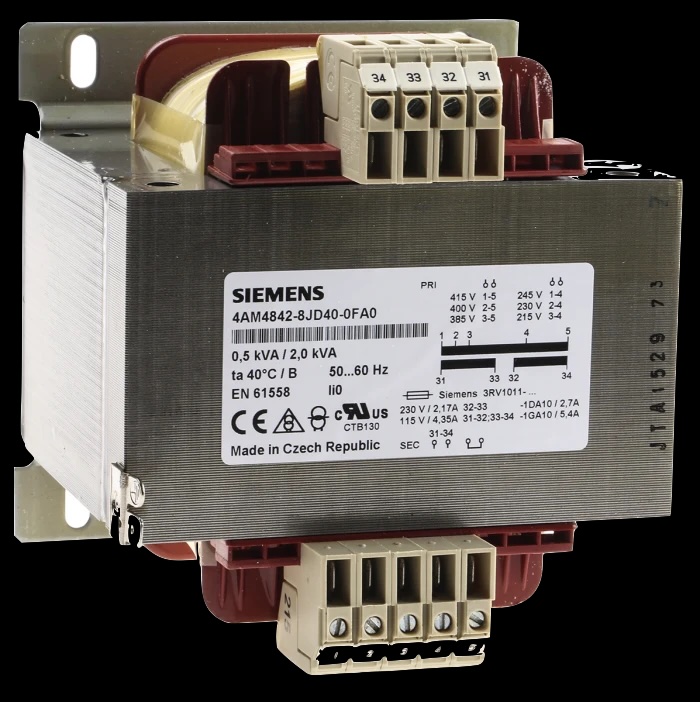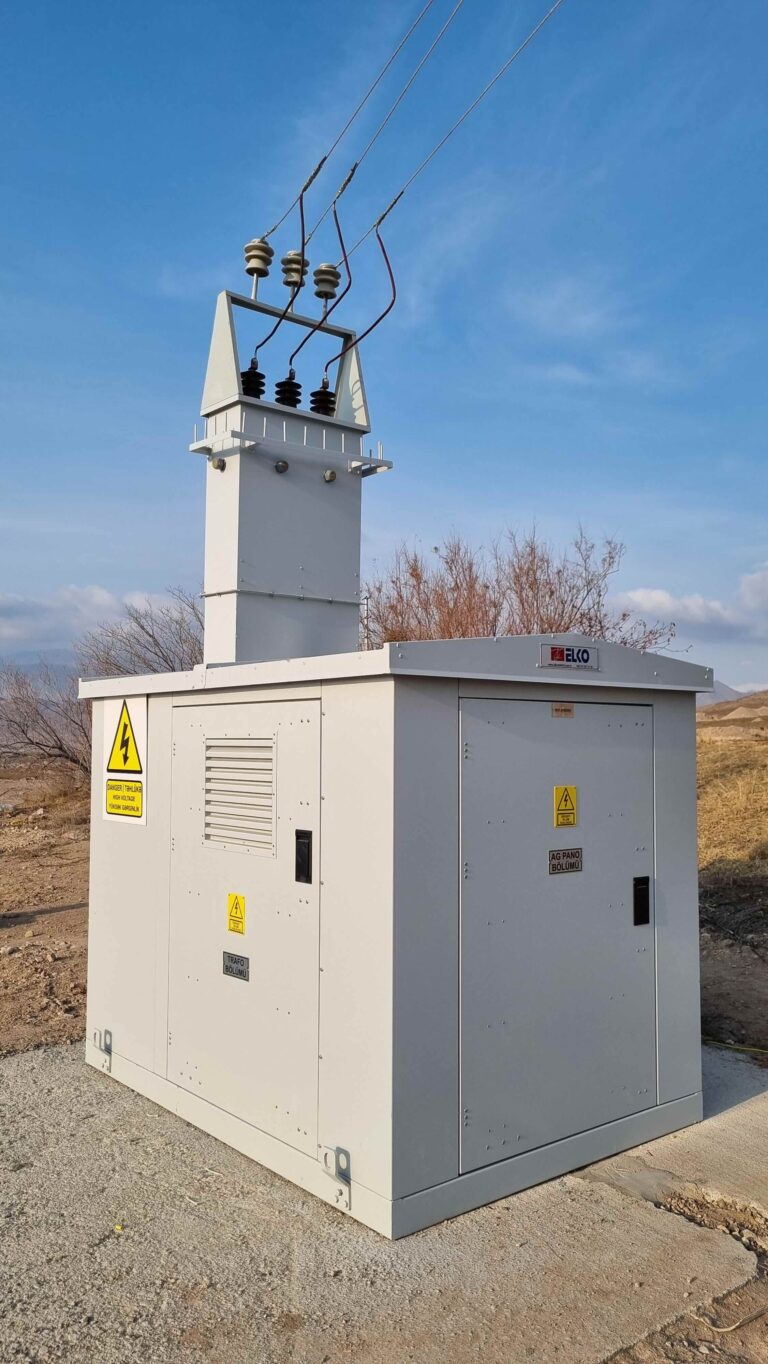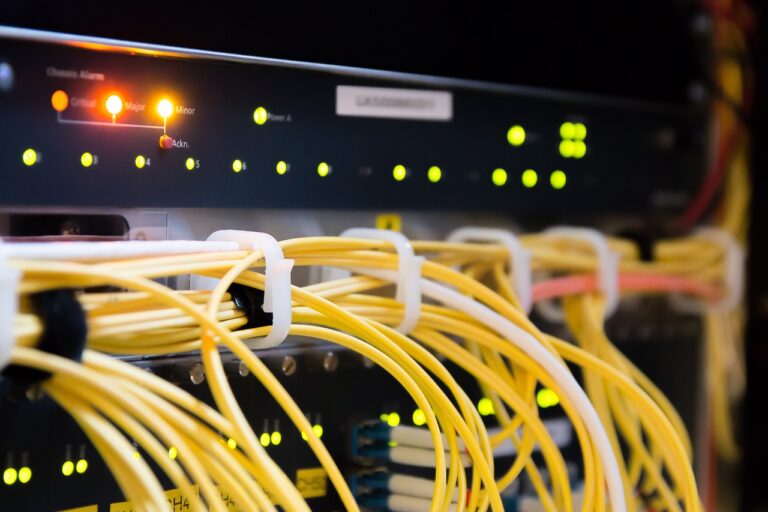What is a Transformer Substation? Features, Applications
A transformer substation is a critical facility designed to convert electrical energy from high voltage to low voltage, ensuring safe...
Devamını Oku

An isolation transformer is a specialized type of transformer designed to transfer electrical power from a source to a load while physically isolating the two circuits. This isolation helps prevent electric shock, reduce electrical noise, and protect sensitive equipment from potential hazards such as leakage currents or power surges. It achieves this by using separate windings for the primary and secondary sides, ensuring there is no direct electrical connection between them.
From hospitals and industrial facilities to laboratories and telecommunications centers, isolation transformers are widely used in environments where electrical safety, equipment protection, and stable power quality are critical. When properly selected and implemented, they not only improve operational reliability but also extend the lifespan of connected devices, making them a vital component in modern electrical engineering solutions.
What is an isolation transformer is a common question in the field of electrical engineering. An isolation transformer is a transformer whose primary and secondary windings are physically separated to eliminate any direct electrical connection. Instead, power is transferred through electromagnetic induction, which provides complete electrical isolation between the input and output circuits. This design significantly reduces the risk of electric shock and minimizes the transfer of electrical noise or interference.
Unlike step-up or step-down transformers, an isolation transformer typically maintains the same voltage level on both sides. Its main role is to enhance safety, protect sensitive equipment, and ensure stable operation in environments where uninterrupted and clean power is essential. This makes it a crucial element in medical, industrial, and high-precision electronic applications.
What does an isolation transformer do? Its primary function is to provide complete electrical separation between the power source and the connected equipment. By isolating the two circuits, it protects people and devices from electrical faults such as leakage currents, short circuits, and power surges. This separation also helps prevent the transfer of electrical noise and interference, ensuring that sensitive electronics operate with greater stability and accuracy.
In industrial and medical settings, isolation transformers also play a crucial role in maintaining consistent power quality. They reduce the impact of harmonics, voltage spikes, and ground loop issues, which can damage equipment or cause data errors. In short, an isolation transformer improves safety, enhances equipment performance, and ensures cleaner, more reliable power delivery.
The purpose of an isolation transformer is to enhance electrical safety, protect equipment, and ensure stable power delivery. By eliminating the direct electrical connection between the primary and secondary circuits, it prevents hazardous leakage currents from reaching the load side. This greatly reduces the risk of electric shock to users and safeguards sensitive devices from damage caused by electrical faults.
Isolation transformers are also designed to improve power quality by reducing electrical noise, interference, and harmonics. In environments where uninterrupted, clean power is critical—such as hospitals, research labs, and industrial automation systems—this function is essential. Ultimately, the purpose of an isolation transformer is not only safety but also improving the reliability, efficiency, and longevity of electrical systems.
How does an isolation transformer work? It operates on the principle of electromagnetic induction. The transformer has two separate windings: the primary winding connected to the power source and the secondary winding connected to the load. When alternating current flows through the primary winding, it generates a magnetic field, which induces a corresponding voltage in the secondary winding. This allows power to be transferred without any direct electrical connection between the two circuits.
Because the windings are physically isolated, the transformer provides complete electrical separation. This not only enhances safety but also eliminates ground loop problems and reduces noise transfer. The voltage on the output side is usually the same as the input, meaning the main function is isolation rather than voltage conversion. This makes isolation transformers ideal for protecting sensitive equipment and ensuring a stable, interference-free power supply.
Why is an isolation transformer used? The primary reason is safety—by isolating the load from the power source, it significantly reduces the risk of electric shock and prevents hazardous leakage currents from reaching users or equipment. This is especially important in environments where human safety is critical, such as hospitals, laboratories, and industrial facilities.
In addition to safety, isolation transformers are used to improve power quality. They help eliminate electrical noise, interference, and harmonics, which can disrupt sensitive electronic devices. They also prevent ground loop issues that can cause malfunctions in audio, video, or data systems. By ensuring clean and stable power, isolation transformers protect equipment, enhance reliability, and reduce downtime across a wide range of applications.
Where is an isolation transformer used? These devices are found in a variety of sectors where safety, power quality, and equipment protection are top priorities. In healthcare, they are used in operating rooms, intensive care units, and diagnostic equipment to ensure clean, uninterrupted power. In industrial settings, they protect automation systems, control panels, and sensitive machinery from electrical disturbances.
Isolation transformers are also common in research laboratories, testing facilities, telecommunications infrastructure, and data centers. In these environments, they safeguard sensitive electronics, prevent data corruption, and maintain operational stability. Wherever electrical isolation, noise suppression, and consistent power delivery are required, an isolation transformer is an essential component.
In hospitals, an isolation transformer plays a vital role in powering life-support systems, diagnostic machines, and surgical equipment. By isolating medical devices from the main power supply, it eliminates leakage currents and electrical noise, protecting both patients and staff. This ensures that critical systems operate reliably, even in the presence of power fluctuations or interference, making isolation transformers indispensable in medical environments.
In industrial automation systems, an isolation transformer ensures that programmable logic controllers (PLCs), sensors, and control units operate without disruption from electrical noise or voltage spikes. By providing clean, stable power and eliminating ground loops, it reduces equipment failures, improves production efficiency, and minimizes costly downtime in manufacturing environments.
In electronic laboratories and test centers, an isolation transformer is essential for accurate measurements and reliable testing. It prevents unwanted electrical noise, harmonics, and ground loops from affecting sensitive instruments. This ensures precise data collection, protects expensive testing equipment, and provides a stable, interference-free power supply during experiments and diagnostics.
In telecommunications infrastructure and data centers, an isolation transformer safeguards servers, networking hardware, and communication systems from electrical noise, surges, and ground loop interference. By delivering clean, stable power, it helps maintain uninterrupted data transmission, prevents system outages, and protects critical digital infrastructure from costly downtime.
Isolation transformer selection should be based on the specific application requirements and operating environment. Key factors include power capacity, voltage rating, insulation level, and compliance with relevant safety standards. In medical environments, transformers must meet strict international regulations to ensure patient and operator safety. In industrial applications, durability, thermal performance, and noise suppression capability are equally important.
Other considerations include the quality of materials, cooling method, and ease of maintenance to ensure long service life. Choosing the wrong transformer can compromise safety and damage equipment, while a well-selected unit enhances system reliability and performance. For critical applications, selection should be guided by professional engineering expertise and adherence to certified manufacturing standards.

A transformer substation is a critical facility designed to convert electrical energy from high voltage to low voltage, ensuring safe...
Devamını Oku
An industrial router is a highly durable and advanced networking device designed to deliver reliable and uninterrupted internet connectivity in...
Devamını Oku
Sustainable management of energy resources has become a strategic priority in today’s global landscape. In this context, underground gas storage...
Devamını OkuPROTECTION OF PERSONAL DATA
WEBSITE COOKIE POLICY
Your personal data; It is one of the leading principles of our Organization to protect the privacy of visitors to the website (www.adatech.com.tr) operated by ADATECH as the data controller. This Cookie Usage Policy (“Policy”) explains to all our website visitors and users which types of cookies are used and under what conditions.
Cookies are small text files stored on your device or network server by websites you visit on your computer or mobile device.
They are generally used to provide you with a personalized experience during your use of the website you visit, to improve the services offered and to improve your experience, and may contribute to ease of use while browsing a website. If you do not prefer the use of Cookies, you can delete or block Cookies in your browser settings. However, we would like to remind you that this may affect your use of our website. Unless you change your cookie settings in your browser, we will assume that you accept the use of cookies on this website.
1. WHAT KIND OF DATA IS PROCESSED IN COOKIES?
Cookies on websites, depending on their type, collect data about your browsing and usage preferences on the device you visit the site. This data includes information about the pages you access, the services and products you review, your preferred language option and other preferences.
2. WHAT is a solution and what are its intended uses?
Cookies are small text files that are stored on your device or network server through browsers by websites you visit. These small text files, which contain your preferred language and other settings on the site, help us remember your preferences the next time you visit the site and make improvements to our services to improve your experience on the site. Thus, you can have a better and personalized usage experience on your next visit.
The main purposes of using cookies on our Website are listed below:
3.TYPES OF COOKIES USED ON OUR WEBSITE
3.1. Oturum Çerezleri
Session cookies ensure that the website functions properly during your visit. They are used for purposes such as ensuring the security and continuity of our sites and you during your visit. Session cookies are temporary cookies, they are deleted when you close your browser and come to our site again, they are not permanent.
3.2. Persistent Cookies
These types of cookies are used to remember your preferences and are stored on your device via browsers. Persistent cookies remain stored even after you close your browser or restart your computer from which you visited our site. These cookies are kept in subfolders of your browser until they are deleted through your browser’s settings.
Some types of persistent cookies may be used to provide you with special suggestions, taking into account issues such as your purpose of using the Website.
Thanks to persistent cookies, if you visit our Website again with the same device, it is checked whether there is a cookie created by our Website on your device and if there is, it is understood that you have visited the site before and the content to be transmitted to you is determined accordingly and thus a better service is provided to you.
3.3. Mandatory/Technical Cookies
These cookies are essential for the website you visit to function properly. The purpose of such cookies is to provide necessary services by enabling the website to function. For example, it allows you to access secure parts of the website, to use its features, to navigate on it.
3.4. Analytical Cookies
They collect information about the way the website is used, the frequency and number of visits, and show how visitors navigate to the site. The purpose of using such cookies is to increase performance by improving the way the site functions and to determine the general trend direction. They do not contain data that could enable the identification of visitors. For example, they show the number of error messages displayed or the most visited pages.
3.5. Functional/Functional Cookies
It saves the choices made by the visitor within the site and remembers them on the next visit. The purpose of such cookies is to provide ease of use to visitors. For example, it prevents the site user from re-entering the user password on each page they visit.
3.6. Targeting/Advertising Cookies
They enable the measurement of the effectiveness of advertisements served to visitors and the calculation of the number of times the advertisements are viewed. The purpose of such cookies is to serve ads customized to the interests of visitors.
Likewise, they enable the detection of visitors’ interests specific to their browsing and the presentation of appropriate content. For example, it prevents the advertisement shown to the visitor from being shown again in a short time.
4. HOW TO MANAGE COOKIE PREFERENCES?
To change your preferences regarding the use of cookies or to block or delete cookies, simply change your browser settings.
Many browsers give you the option to accept or reject cookies, accept only certain types of cookies, or be alerted by the browser when a website requests to store cookies on your device so that you can control cookies.
It is also possible to delete cookies previously saved in your browser.
If you disable or refuse cookies, you may need to set some preferences manually, some features and services on the website may not function properly as we will not be able to recognize and associate your account. You can change the settings of your browser by clicking on the relevant link from the table below.
5. ENFORCEMENT OF WEBSITE PRIVACY POLICY
Website Privacy Policy …./…./…./…. . is dated. In case all or certain articles of the Policy are renewed, the effective date of the Policy will be updated. The Privacy Policy is published on the website of the Authority (www.adatech.com.tr) and made available to the relevant persons upon the request of the personal data owners.
ADATECH
Address: Esenyalı Neighborhood Yanyol Street Varyap Plaza No:61-148 Pendik / Istanbul
Telephone: +90 (216 ) 514 80 69
E-mail: [email protected]
Web Address: www.adatech.com.tr